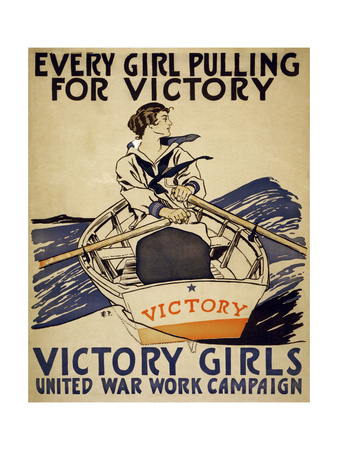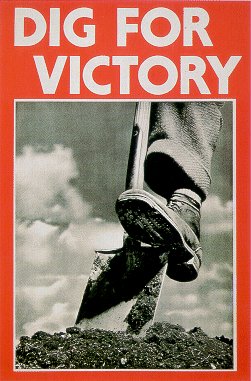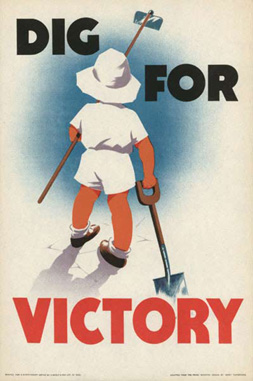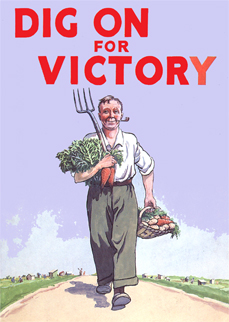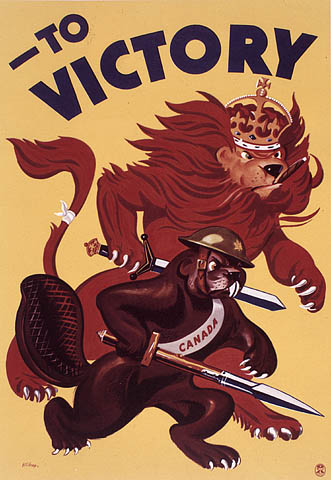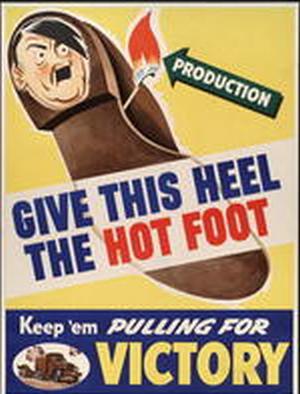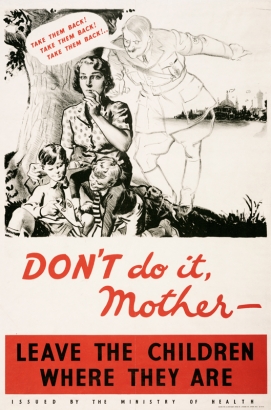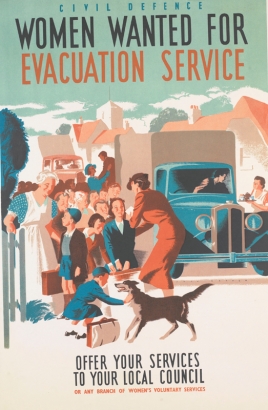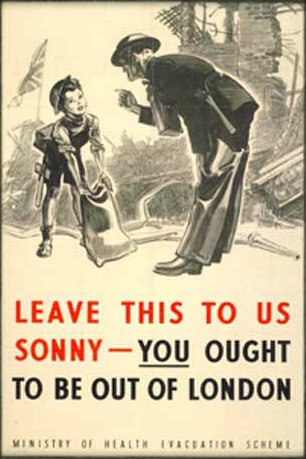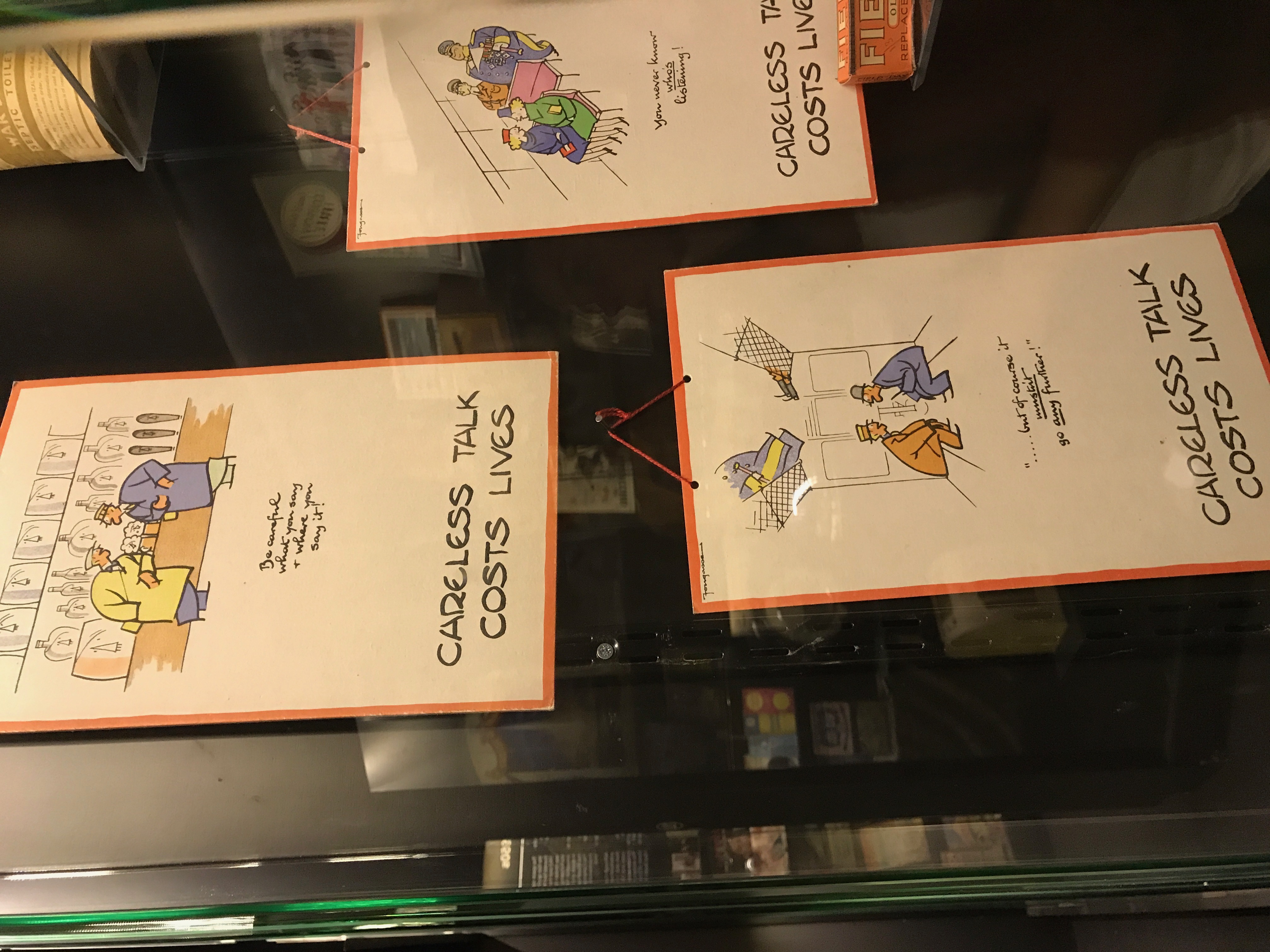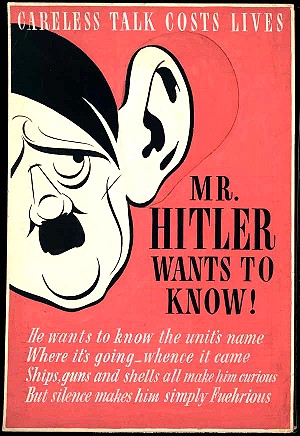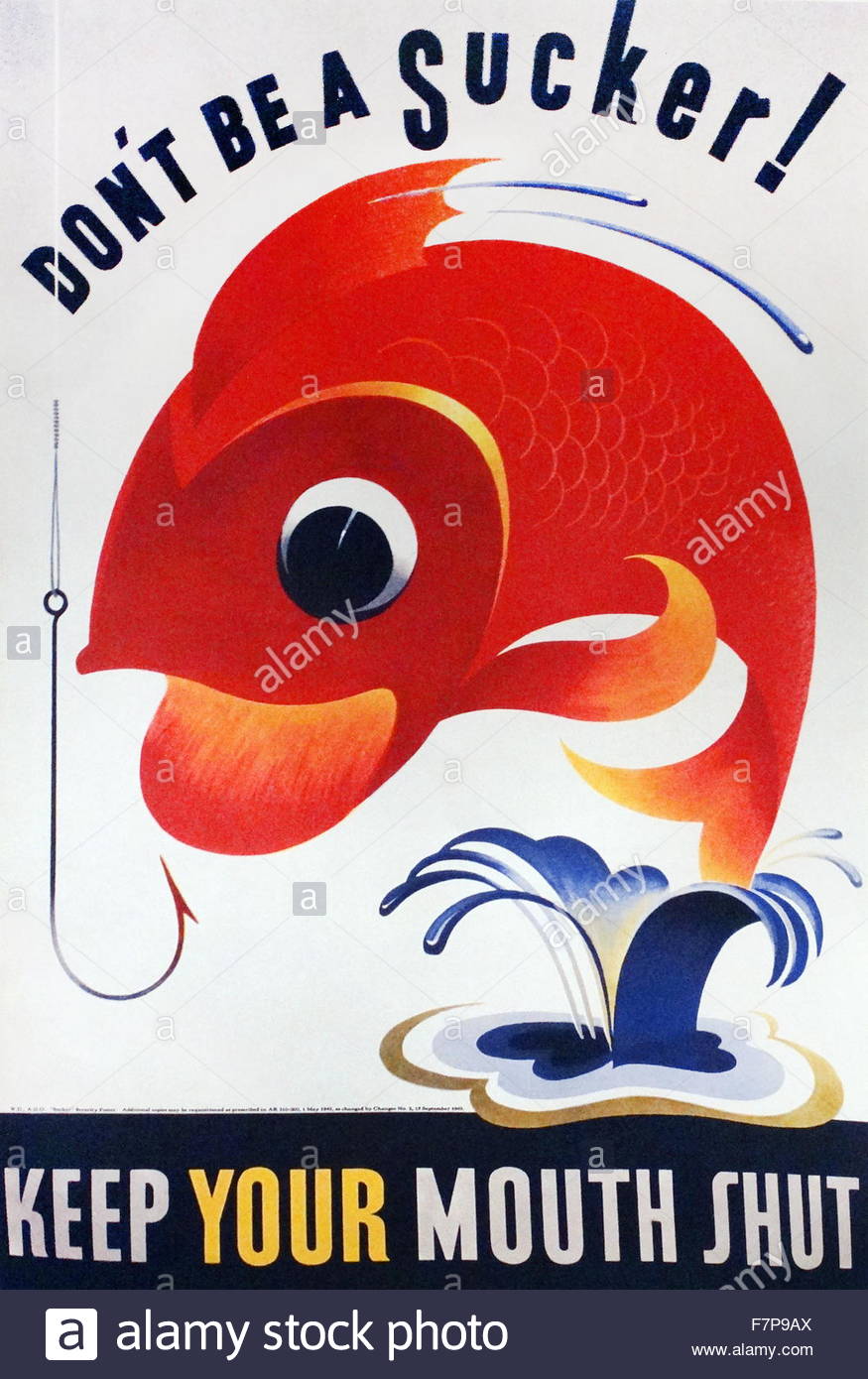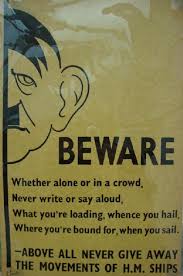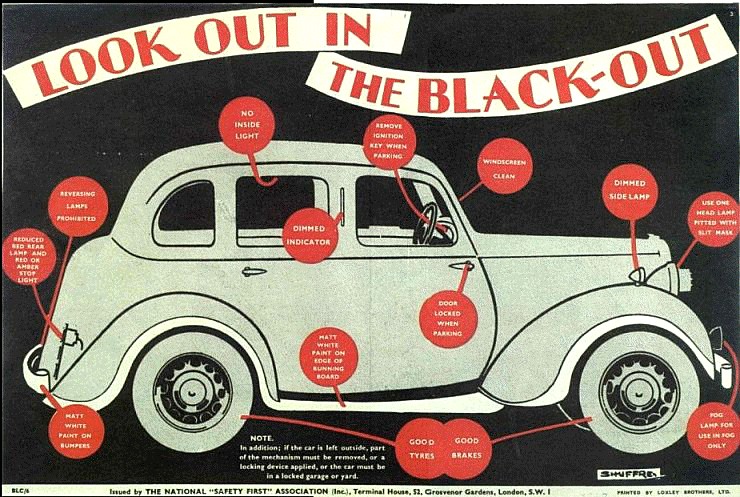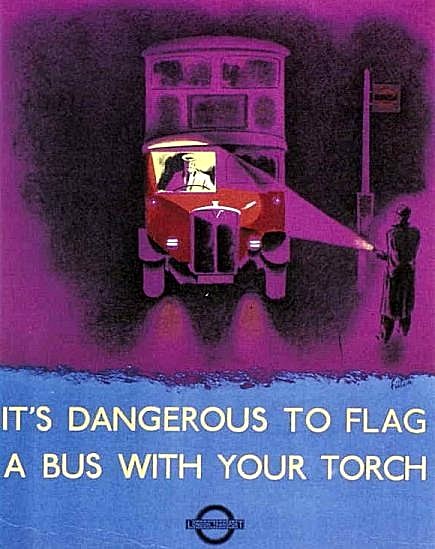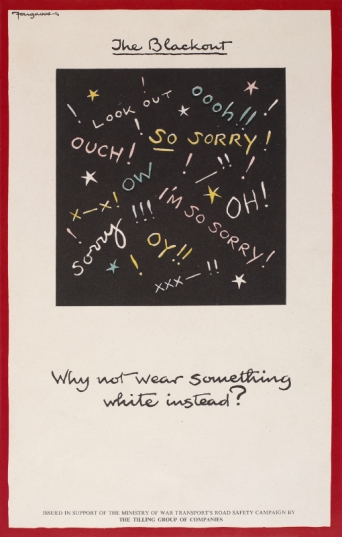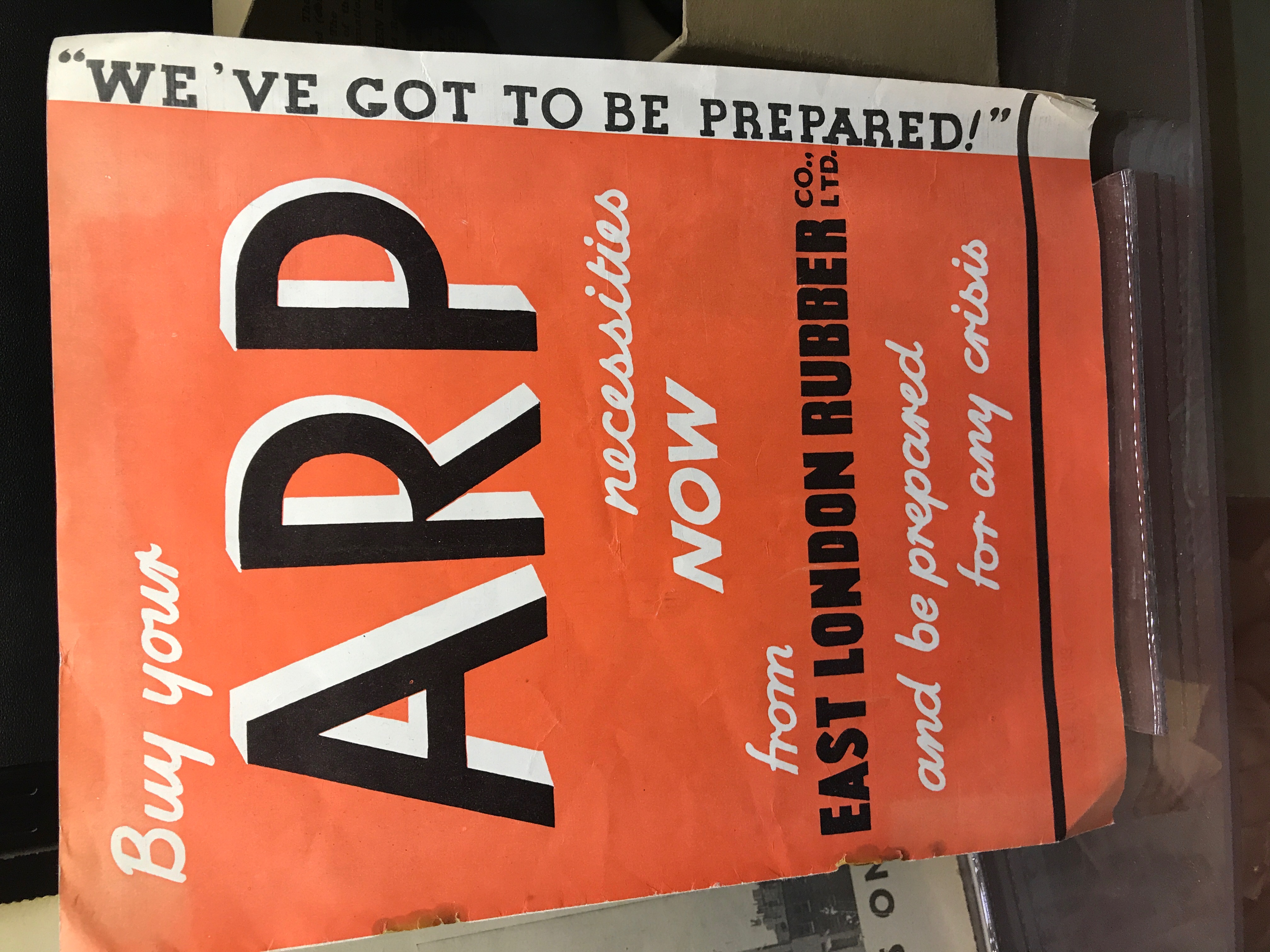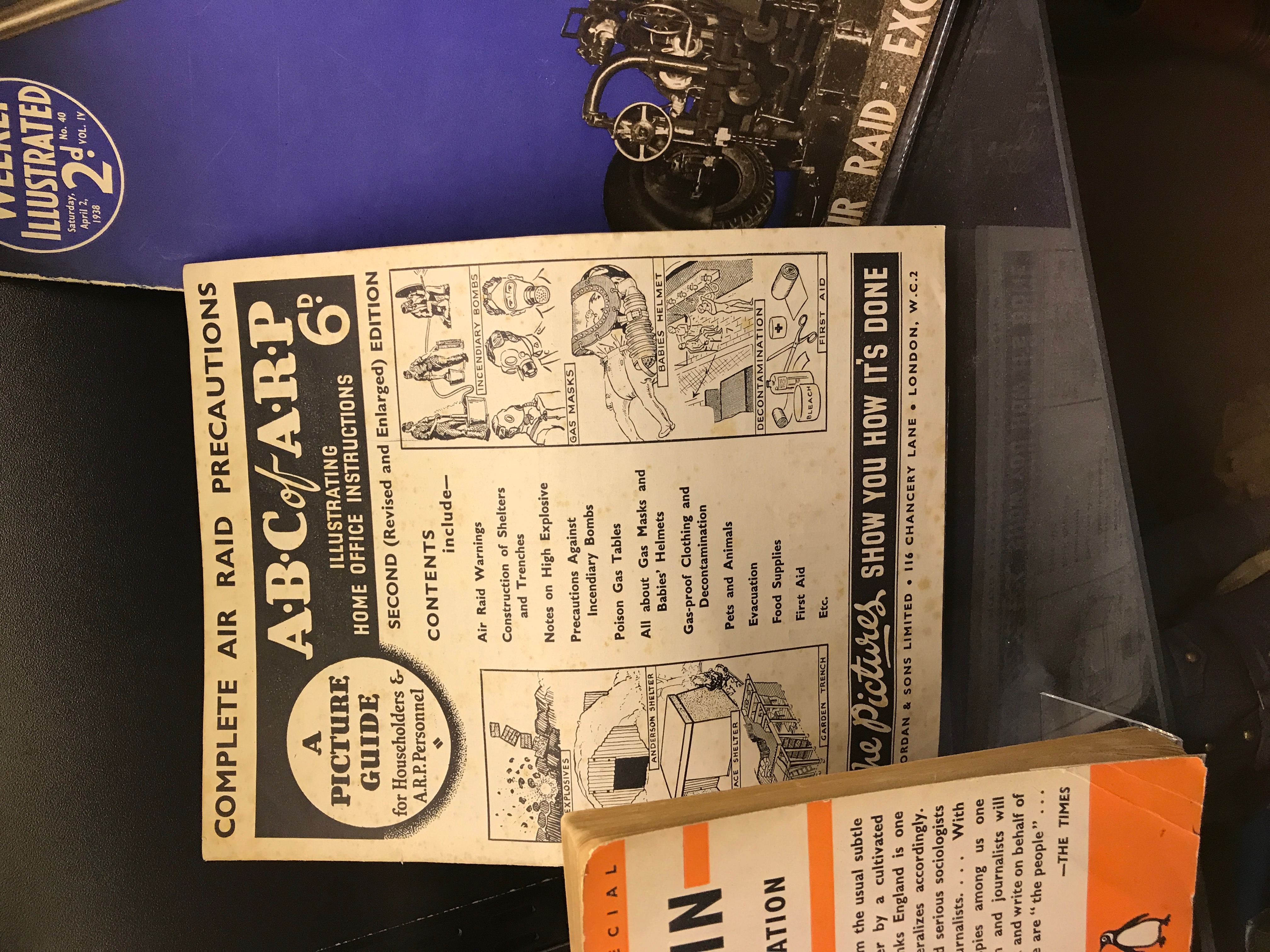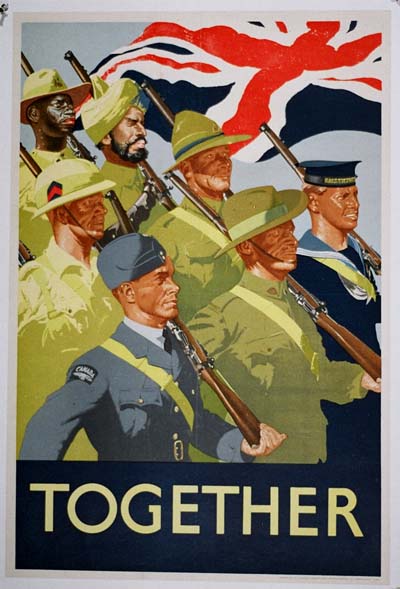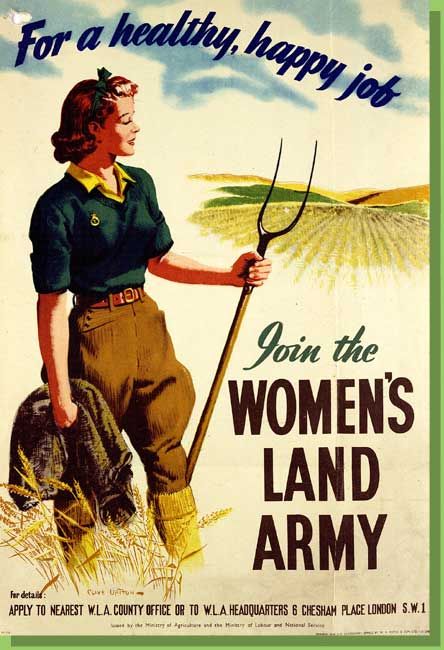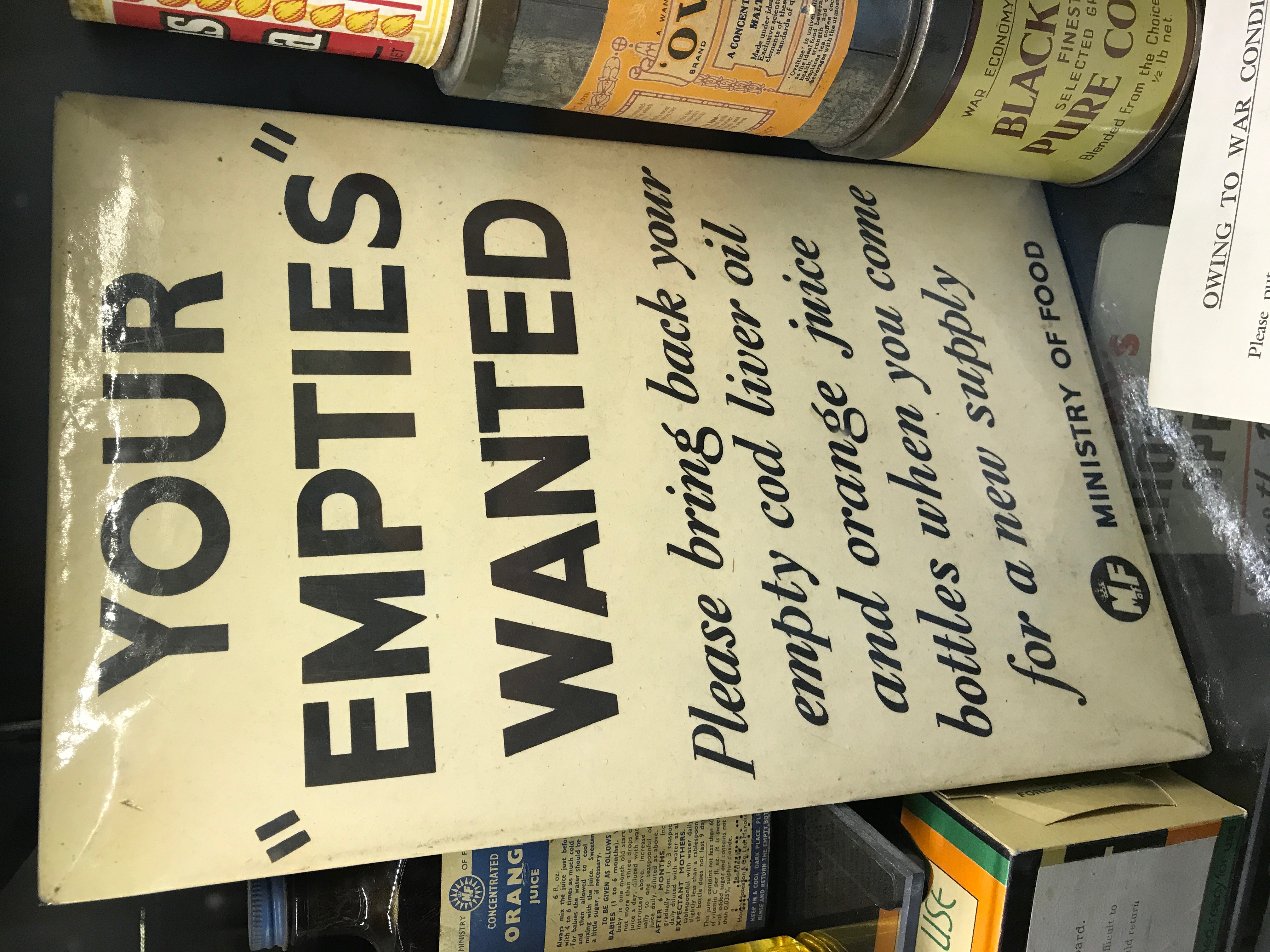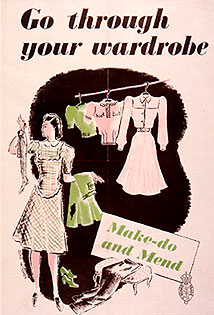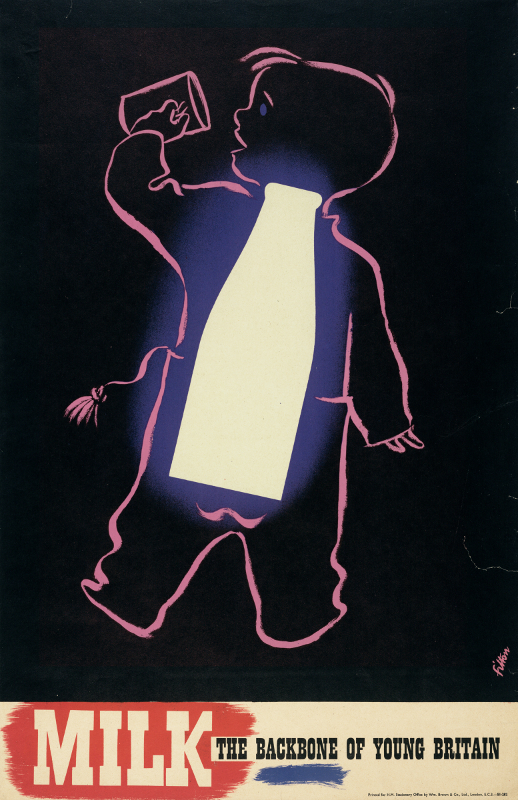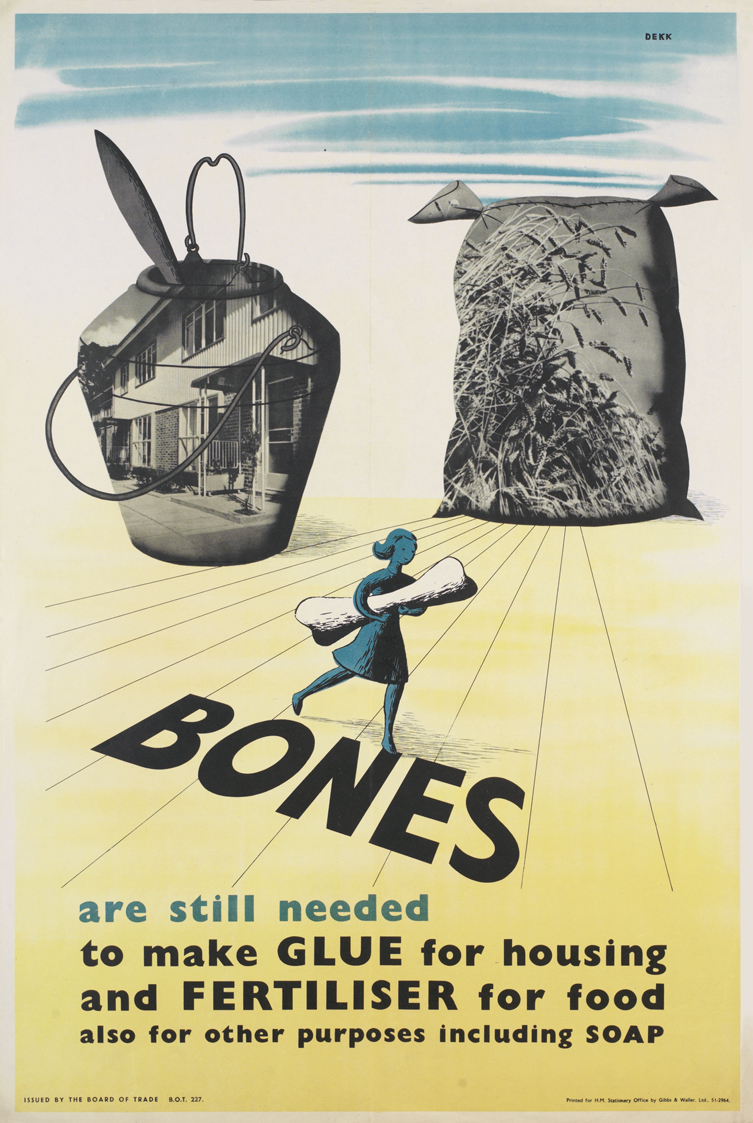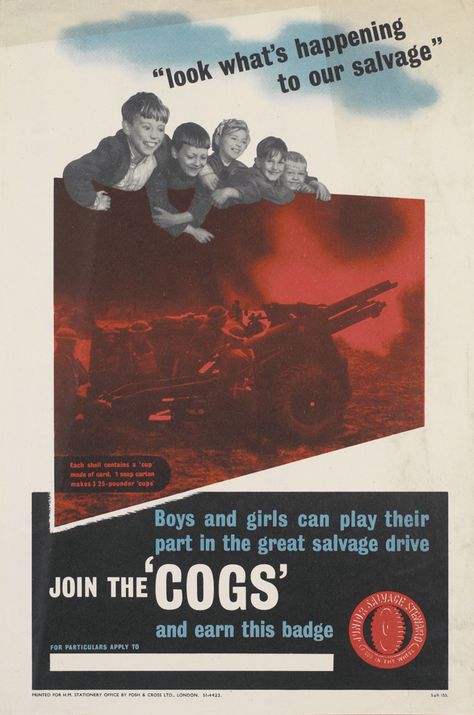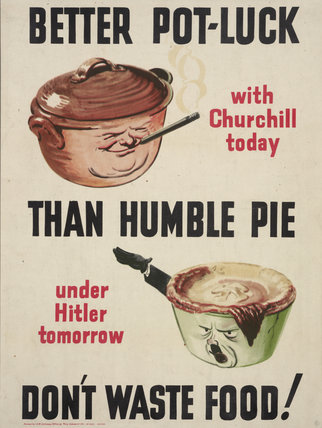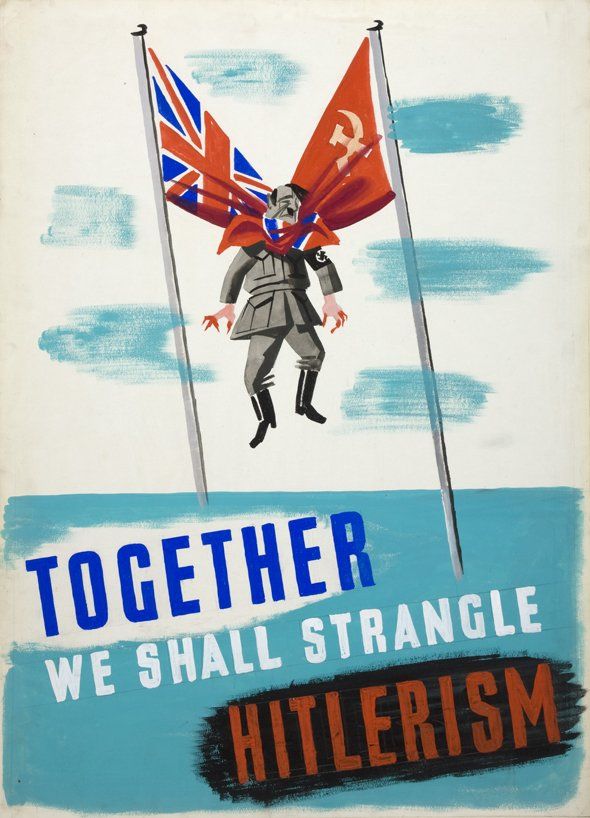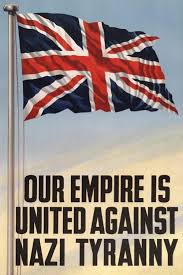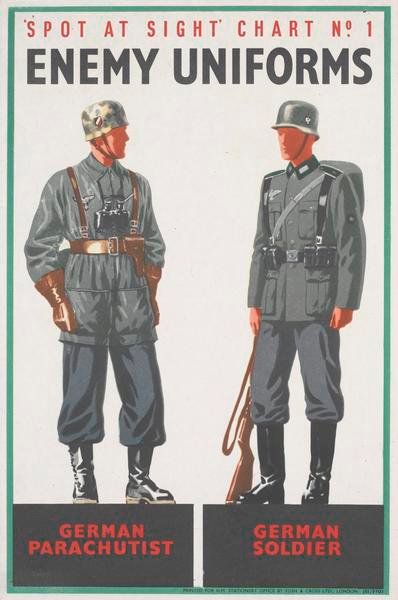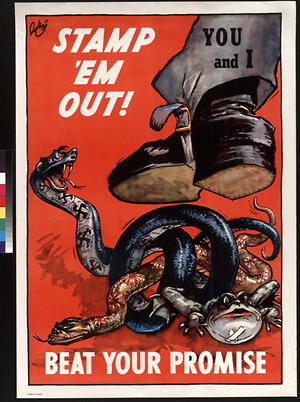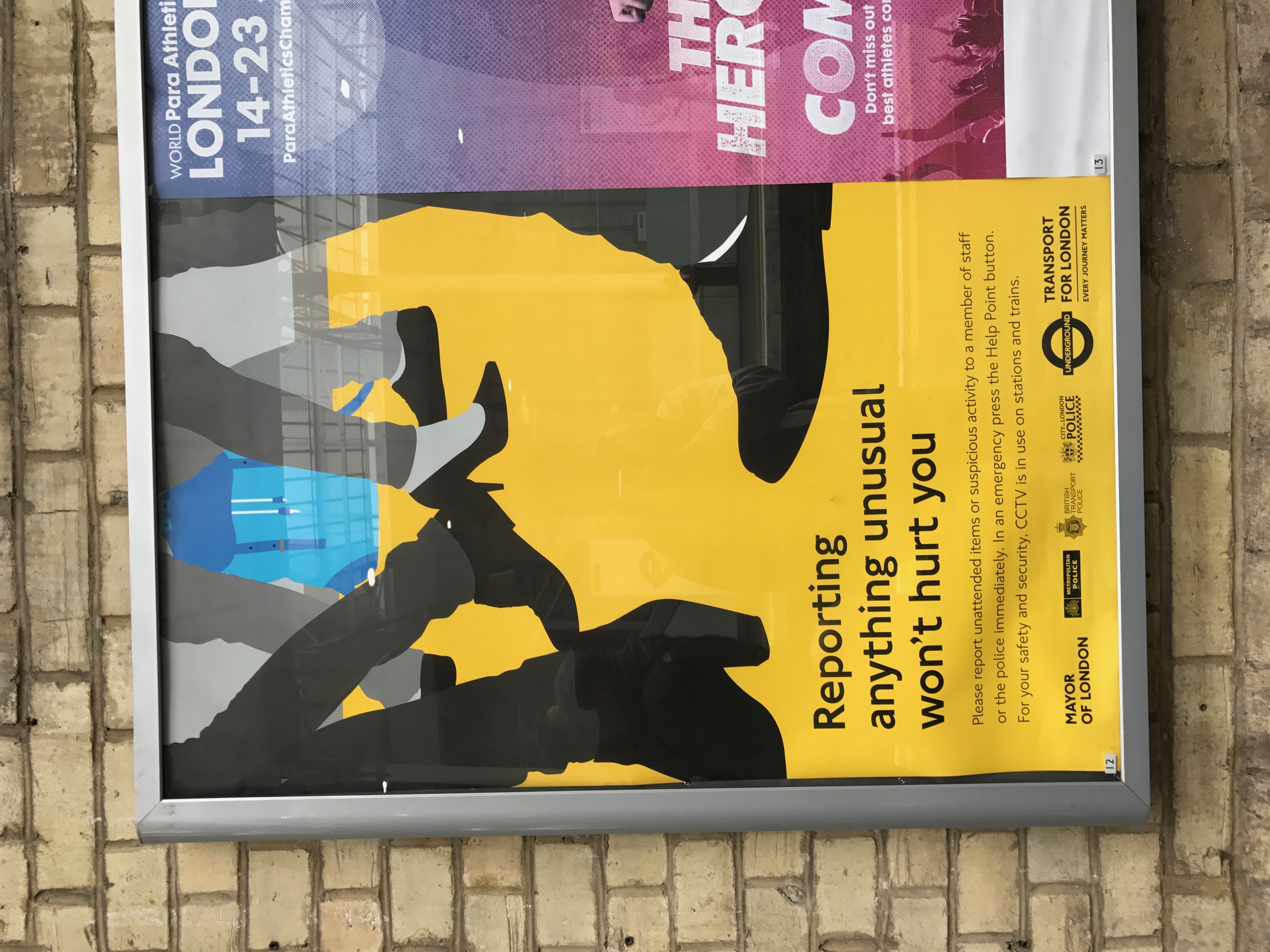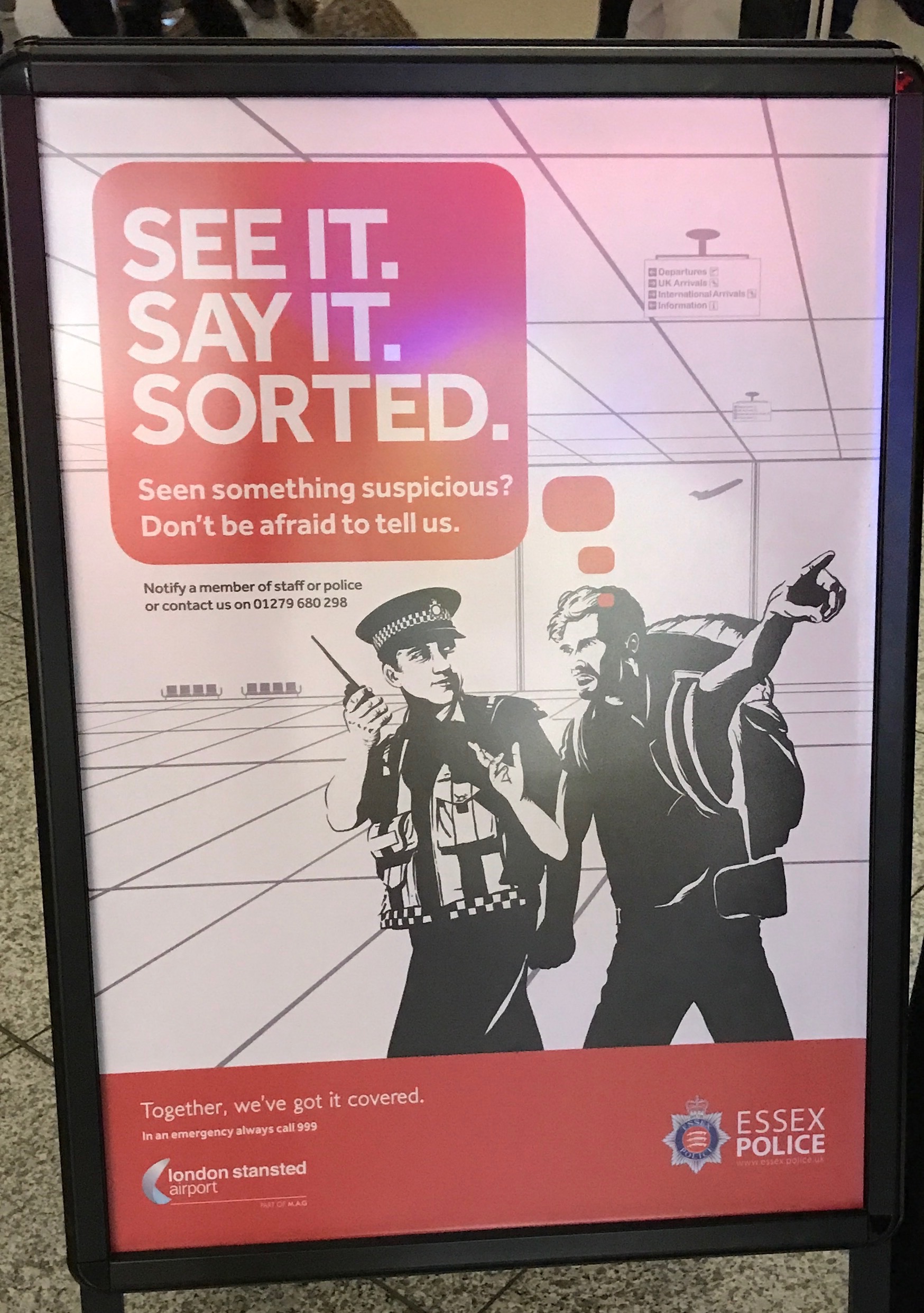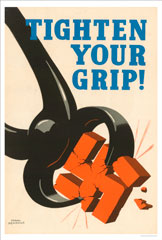Difference between revisions of "Advertising Revelations"
From Londonhua WIKI
Akacherski (talk | contribs) (→Historians' Interpretation) |
Akacherski (talk | contribs) (→Historians' Interpretation) |
||
| Line 152: | Line 152: | ||
good2.jpg | good2.jpg | ||
good3.jpg | good3.jpg | ||
| − | + | snake1.jpg | |
</gallery> | </gallery> | ||
<br><br> | <br><br> | ||
Revision as of 13:07, 20 June 2017
Advertising Revelations
 Piccadilly Circus | |
| Photo Credit | Emily McEachern |
|---|---|
Contents
Abstract
War advertising over the ages has changed. In this milestone I will compare the poster advertisements produced during the world wars to the ones produced today for the war on terror. Advertising will also change in the future. I plan to evaluate trends today to gauge where it is going in the future. World War II posters told viewers many different messages. Today's posters have a similar message to each other: fight terrorism. I will briefly evaluate the history behind the World War II posters and compare them to today's posters on the war on terror.
Introduction
I suggest you save this section for last. Describe the essence of this project. Cover what the project is and who cares in the first two sentences. Then cover what others have done like it, how your project is different. Discuss the extent to which your strategy for completing this project was new to you, or an extension of previous HUA experiences.
As you continue to think about your project milestones, reread the "Goals" narrative on defining project milestones from the HU2900 syllabus. Remember: the idea is to have equip your milestone with a really solid background and then some sort of "thing that you do". You'll need to add in some narrative to describe why you did the "thing that you did", which you'd probably want to do anyway. You can make it easy for your advisors to give you a high grade by ensuring that your project milestone work reflects careful, considerate, and comprehensive thought and effort in terms of your background review, and insightful, cumulative, and methodical approaches toward the creative components of your project milestone deliverables.
Background
World War II
This time period was dominated by world war propaganda. Not just in the United Kingdom, but in all countries involved in the wars. Propaganda has a certain negative connotation when used today but that was not the case then. This was a way for the government to generate support for the war effort. The most common form of propaganda was the poster. According to Vallée, they were often called "weapons on the wall."[1]. These advertisements encouraged citizens that Britain could win the war, and it needed their help to do so. [2]. These posters often depicted women working in factories or other male dominated jobs to show that they could replace men and help with the war efforts. This encouraged the government to increase advertising by commissioning more posters to be made.
In 1939, the Ministry of Information was formed to commission posters to influence public opinion. Their work included posters to convince people to grow their own food to cut down on import costs. Others encouraged people to reconsider their weekend trips and encourage the women to take jobs in the factories. [3] To make the posters more effective, the Ministry of Information hired artists to design them. They had drawn up a list of fifty eligible artists who could be commissioned. To provide these artists financial compensation for their work, the Ministry of Information had three options. These were full-time salaried employees who had six month contracts, others were paid off direct commission, and others were encouraged to submit their work for purchase consideration. The Ministry of Information also had criteria the posters must fit. The most important one was that the poster must be painted through an eyewitness' perspective[4]. The posters and artwork are painted as if you are witnessing the events being portrayed first hand, as if you are standing there in that situation.
Victory
British victory posters were produced to boost morale. This was important because morale had a direct bearing on industrial production[5]. They were also intended to be seen by the Germans to undermine their morale. Often the posters put a positive spin on things that were not positive. They sometimes included aspects of the other kinds of propaganda posters. In 1941, the British Ministry of Agriculture started a campaign 'Dig for Victory.' This campaign encouraged people to grow their own food in times of harsh rationing [6]. The posters also indicate that the women at home could also help with victory by replacing men's jobs.
Historians' Interpretations
As part of the “Keep ‘em pulling for victory” campaign, the dazed head of Hitler was seen trapped in the heel of a shoe and on the verge of exploding, as “production” has already lit the fuse; “Give this heel the hot foot”, reads the caption. Hitler is presented as an easy, vulnerable target and production (active participation in the war effort), will inevitably result in victory over him [7].
Evacuation
Evacuation: The evacuation posters during WWII were very straightforward. They told the viewer about evacuating London in case of aerial bombings. This way when it came time to evacuate, such as Operation Pied Piper, the idea of evacuation wasn’t new to them and they understood what they had to do. During World War II, it was estimated that over 1.5 million people were evacuated from their homes[8].
After the threats of aerial attacks became non-existent, people began to return to their homes. By 1939, almost half of the evacuees had returned home. This was not advised by the government because they still felt that bomb threats were imminent. This led them to start posting material advising mothers not to bring their children home. These kinds of posters were intended to appeal to a mothers’ maternal sense. The poster shown below depicts Hitler urging a mother to bring her children back to the city. It is implied by his body positioning, body language, and conversation with the mother that he wants her to bring the children back so he can attack the city and cause more casualties. [9].
Historians' Interpretation
The first poster in the gallery pictures a British mother and her children sitting under a tree in a safe area with an enticing, ghost-like Hitler standing behind her and whispering, “Take them back, take them back, take them back” while pointing at a city in the background. According to Vallée, listening to the Hitler, whose eyes and words have been deliberately drawn in red to suggest danger and evil, is clearly synonymous with putting lives in danger, and Hitler is pictured as a threatening figure [10].
Careless Talk
'Careless Talk Costs Lives' became some of the most notable posters from this era. The campaign against careless talk was very important. It was intended to keep people from divulging information to enemy sympathizers or enemy spies[11]. . Casual talk could allow the enemy to target specific targets and cause mass causalities. The influx of anti-Nazi German refugees had people on edge, they believed the refugees were actually spies, working for the Germans. Since they were not trusted, these refugees were rounded up, arrested, and sent to the Isle of Man. Not wanting to leave anything to chance, Winston Churchill ordered an anti-gossip campaign in 1941: careless talk [12].
Historians' Interpretation
This analysis is of the red poster shown below. Vallée believes the presence of Hitler is made even more ominous by the use of dimension in the picture: with its big ear, is truly menacing. This incarnation of threat has the obvious objective of frightening the viewer or at least of encouraging him/her to think twice before talking.The general message to the population was that Hitler was always liable to be listening to them [13]. In the British poster entitled “Beware”, the darkening expression on Hitler’s half face shows the seriousness of the danger represented by the Nazi leader. It is to be read in the dark look, with the sinister, drooping eye instantly linked to his outsized lingering ear. Again, the simple, but nonetheless effective, correspondence between the caption, “Beware”, and the expression on Hitler’s caricatured face clearly turns the latter into the epitome of danger [14].
Blackout
Blackouts were crucial to keeping civilians safe. During the war Britain shut off the power to the entire city of London. The reasoning behind this was that the Axis bombers would have a hard time conducting aerial attacks at night if there were no lights on in the city. The darkness could help the bomber to miss their target, saving historical landmarks and civilian lives. This required full cooperation from civilians. The government provided blackout material so that people could cover their windows so that absolutely no light could get out. People often needed two or three sheets of material in order to achieve this. Some people became assigned the position if A.R.P. (air raid precaution) warden. They wore a helmet with a W on the front so they could be easily recognized. They were in charge of making sure their neighbors were completely blacked out. The warden would go around and knock on doors and tell people if they had light showing. They could also report someone who did not comply with the blackout. The report could lead to a hefty fine or a court appearance. [15]
Blackout posters helped to remind people of the importance of blackouts. They would tell the viewer the times the blackout was imposed, or how to stay safe during it. The posters also warned people of the dangers of the blackout such as crime or potential hazards associated with moving at night. There were also publications about how ones diet could help them to have stayed safe during this time. There were posters produced telling viewers to eat carrots. Carrots are rich in Vitamin A which was believed to help with eyesight. Below is a gallery of posters produced by the ministry of information regarding the blackout.
Support
Support posters are probably the most familiar form of propaganda you've seen . They called for all men and women to help Britain win the war. With a large portion of men leaving their jobs to defend Britain in the war, ad campaigns and posters called for women to work in factories to make weapons or planes while the men were at war. Due to the harsh rationing and the call for people to grow their own food other posters called for women to work on farms. These campaigns conveyed the message that everyone had an important role to play. This allowed the public to feel involved in the war. There were also calls to support the troops in battle.
Preventing Waste
Waste was a major concern during WWII. The factories were focused on producing war materials. By wasting consumer goods, factories would have to take their attention away from war materials and direct it towards consumer goods. This can be problematic for the war. Posters during this time called for recycling, rationing, and growing your own food. During the war Britain had to be self-sufficient due to the attacks shipping ports. Clothing was a major source of waste. Posters urged people to ‘Make Do and Mend.’ They advocated for people not to buy new clothes, but instead be content with the clothing they had now. If something was tattered, to mend it themselves. There were also posters rag donations. They also encouraged people to donate any material scraps to rag collectors so that the material could be used for blankets and uniforms for the soldiers[16]. .
Food waste was another major concern. The food supply was limited during the war, so to help combat this problem the government commissioned a series of posters. One kind encouraged people to grow their own food. This allowed people to grow what they like and not put strain on farmers or the food packaging industry. This saved tin cans and other materials needed to pack food so that they could be used for war materials such as helmets and bullets.[17]. There were also posters created about portion size. The food supply was limited since some food companies converted their factories to create war materials. These posters had slogans such as ‘A clear plate means a clear conscience.’ This encouraged people not to take more food than they could eat. This helped to prevent waste and aimed to allow everyone an equal opportunity to food. There was also a campaign about milk. Calcium intake among vulnerable sections of British Society was a priority for the Ministry of Food. The increased calcium was believed to help keep pregnant women and children healthy. During this time, milk rations were increased for these two groups. The government even initiated a provision of free milk to school children from 1946 to 1971. The poster had slogans such as ‘Milk: The Backbone Of Young Britain.’ The poster depicted a child with a glass bottle of milk as a spine drinking a glass of milk[18]. .
Aside from food people were encouraged to recycle. Children were encouraged to collect metal, paper, and rags for recycling. The poster below containing the quote "Join the Cogs" depicts the soap cartons collected by children being used as artillery shells in war. Bones were also highly sought after. The recycling of bones allowed them to be used as glue or fertilizer [19].
Historians' Interpretation
In the famous poster “Better pot-luck with Churchill today than humble pie under Hitler tomorrow,” Hitler is represented as an unappetising humble pie, and caricatured through the Nazi salute. Vallée believes the effect of the poster is both to highlight the danger the Nazi leader represented and to belittle him through a contrast with the attractive British Prime Minister. Indeed, roundness is what characterises the brown pot, with the chubby, smiling face of Churchill whose features are clearly synonymous with kindness, openness and mirth. Behind the images of the two leaders, one can easily discern the type of society that each symbolises [20]. The saluting Hitler-pie is small and aggressive, as is suggested by the sharp and pointed lines of the face, and the exaggerated arm movement. The features of the pie face, with its small, black, piercing eyes, the lines underneath them and round the mouth, which is both distorted by his “Heil” and smeared by his black moustache, are so aptly drawn that they seem to encompass the nastiness of the character and of the regime that he wants to impose. The choice the viewer should make is simple: follow and support Churchill and reject Hitler. This poster shows the belittling of Hitler. The belittling process is systematic, but, while some posters evidently encourage aggressiveness, if not hatred, and are definitely unfunny, this one relies on ridicule and lampooning in a much more humorous or light-hearted vein, by means of aesthetic exaggeration and simplification [21]
Good v. Evil
These posters served as a way for the British government to justify their involvement in the war. The posters aimed at the viewers’ emotions. They were aimed to boost morale and share specified ideologies. It was important during this time that people knew who the enemy was because this eliminated the possibility of people questioning the ethics of the war, and reduced the probability of becoming traitors[22].
Historians' Interpretation
One of the best ways to galvanize public opinion was to use deeply negative representations of the enemy. This often resulted in the use of caricature. The emotional impact created by the artists in these posters was enough to sustain the will to fight in war [23]. The danger represented by the Nazi leader is often brought close to home by propaganda artists. Vallée claims that when propaganda combines an accusatory tone, warning and fear-breeding visions, it is designed to be conducive to action. Hitler was also portrayed as different animals. Vallée says "The dehumanisation of the Nazi leader is complete: only the familiar lock of hair and the stamped swastikas remain. What is more, as a serpent, Hitler is condemned as slithering, treacherous and potentially deadly."
Section 2: Deliverable
Comparisons
Current day war advertising isn't as it was during World War II. This is because there isn't a direct enemy to fight against. Today we are fighting with the concept of terrorism instead of a dictator, like Hitler. Today's war is so much more complicated. Instead of fighting a person or country, we're trying to fight a radical idea and today's advertising reflects this. Today in tube stations, bus stations, and airports, you are likely to find some sort of poster about reporting something unusual. The poster usually depicts a bag that was left on the ground by someone and everyone walking around it. This poster is meant to make the passenger more aware of their surroundings in order to keep them safe. By placing these posters, the idea of suspicious solitary bags will be in the backs of peoples' minds. This will make them more likely to report something more unusual. World War II was a major war that changed the course of history. It's posters were vital to making sure that a tyrannical dictatorship didn't take over Europe. Today's war on terror is meant to protect citizens from attacks. There is no threat of losing control of the country. Today's posters do not fill the same niche as the posters from World War II. The posters from World War II would be needed to save many more lives.
Similarities
Through my analysis of these posters, I have noticed they have similar color and layout patterns. According to Mahaney, propaganda posters were the most successful medium to depict the attempts to educate and persuade the civilians[24] By bolding the important text and phrasing it as a command it urges the importance of the message. Shown below is the poster I mentioned, 'Report Anything Unusual Won't Hurt You.' The background of the poster is yellow, the text is short, bolded and phrased as a command, making it very easy to get the attention of the reader. Also shown below is a poster I saw in Stansted airport in London. This was two days after the terror attacks on London Bridge and Borough Market. The sign says 'See it, Say it, Sorted.' Again this poster uses short commands and contrasting colors to draw attention to the eye. This poster has a white background and a red text box making it very bold on the poster. It depicts a man reporting an incident to a police officer and it appears the police officer is handling the situation. This is meant to show how easy it is to defuse a potentially dangerous situation.
The World War II posters are very similar. They have bright colors and command sentences. Instead of a bright background, they used colored text on a white background for a lot of posters. Most of the posters had one sentence in a much larger text relating to the picture behind it. This can been on the 'Tighten your Grip' poster. The sentence is bold, bright, and relating to the picture, similar to modern day posters.
The language both sets of posters use is very similar in that their word choice helps to solidify their message. The posters mentioned above are called fear propaganda. These posters warn that something horrible will happen if they do not follow a specific course of action. They play on fear and try to get you not to think[25]. They warn if you do not warn an authority about something suspicious, there could be an attack. The other common type of propaganda used is bandwagon propaganda. This style tells the viewer that everyone is doing it and so should you. People will be more likely to join or agree when they believe “everyone” is doing it[26].
The similar histories behind the posters and styles of effective graphic art are what allowed them to become so similar. Currently, the war on terror is unpredictable. We have no way of knowing when or where an attack can happen. The only real way to combat this is to prepare people for the worst and urge them to remain vigilant. This was the same approach used during the air raids/blackouts during World War 2. The civilians had no way of knowing it was coming or where they were going to attack. They could only fight it by making sure their windows were completely blacked out. Since this approach worked well, the government is trying the same approach now to fight terror. The only way to prevent an attack is remaining proactive. They are also similar in that both wars are a war of ideas. Along with posters, short propaganda movies were shown in cinemas during World War 2 to encourage men to join the army. Groups today are also using films to recruit new members. Al-Qaeda and other terrorist groups create propaganda movies to encourage members to join[27].
Differences
The most obvious difference between the two sets of posters is content. During World War II, it was vital that the public comply to the posters' messages. Doing so could hurt the country. There were a lot more messages then than there are today. Currently, there is no declared war so precautions like rationings and evacuations are not necessary. The war on terror is hard because there is no way to prevent it, like using blackouts to avoid air raids. The only way to combat terrorism is to remind people to stay vigilant. There is also a difference in language. In the World War II posters, the language suggests that by you doing your part, you can help to win the war. This is clear in the rationing, growing your own food, recycling, and evacuation posters. Today's posters use language that implies that it is a team effort in order to win the war on terror. It uses language such as we and together. Today's society uses mostly bandwagon propaganda and places teamwork and cooperation as a main focus. By wording the posters this way, it allows the viewer to feel like they are part of something bigger than themselves. There is also the idea that if you do not do your part you are letting your team down. As I mentioned above another difference between the poster is the severity. Not listening to a poster during World War II could have caused unforeseen tragic events, possibly the losing of the war. Today if do not report a suspicious event, you are likely to be fine.
Interpretations
Based on the number of posters produced during both time periods, the government placed a great amount of emphasis on them. They really wanted to get the message across to the citizens to help their cause succeed. The posters from World War 2 seem to be cartoon-like. I feel there is a few reasons for this. The cartoon-like pictures allowed people to get the message across without scaring them. Cartoons were familiar to people as they were showed in the movie theaters and served as a form of entertainment . The posters are acting in the same way. It allows the message to come across in a cartoon world and not necessarily the one they are living in. This makes the threat seem less dangerous and people still got the message it was trying to portray. The reason for them being drawn in this manner is because of the artists. The artists who were commissioned by the Ministry of Information often times did other artistic work. Edward Ardizzone, for example, was a children's book illustrator and an artist who painted the human side of World War 2. His gently humorous drawing style allowed him to to humanize the events of the war and become on of the most enduringly popular artists commissioned[28].
Today the opposite is true. Due to the exposure people have to violence, whether it be in movies, video games, TV shows, etc., people are becoming numb to it. The way advertisers are trying to captivate the viewer's attention now is to use real-life and bold examples. The use of computers helps them to achieve this. The posters now make the viewer feel as if the situation described can happen near them at any time. This keeps them on their toes and keeps them vigilant.
If I had to choose which era of posters made me more aware and wanting to participate, I don't believe I would be able to fairly choose.I have never faced things that occurred during World War 2: blackouts, rationing, careless talk, recycling, and evacuations. The problems in each set of posters depicted societal problems at that time. We do not face rationings and evacuations today just as in the 1940's, they did not have to worry about reporting suspicious baggage or having an uneasy feeling in a large crowd. For the time period they were intended for, these posters accurately represented an attempted solution to a societal problem.
The posters were often bright and colorful to draw attention and catch the viewers eye. The audience for these posters was not limited to adults. They were meant to be shown to the entire population, children included.v Bright colors are also synonymous advertising related to children so this also caught the child’s eye. If the posters were not bright and colorful, then they were every simple; they had just a few words. This allowed the posters to be read quickly as the viewer walked by quickly on the platform to catch their train.
Evacuation posters were made to get the idea in the back of peoples’ minds. These posters mostly depicted the evacuation of women and children. The idea was that the men could handle themselves or stay back and fight for the city. The women and children had to be brought out of the city to be protected.
Blackout posters were often used dark colors to reinforce the idea of a blackout.
Good vs. Evil posters portrayed the Germans as evil, heartless people that needed to be stopped.
One question that came into my mind while I was researching these posters, what determined the quantity of each poster produced at any given time? Did events in the war determine what posters were produced at that time? After further research, Cecile Vallee has the same speculations. She believes that the dates and contexts of the posters explain the changes in approach but since the posters are undated and the Ministry of Information did not release the artist of each poster, it is determine if there is a correlation[29].
Future of Advertising
Advertising is changing rapidly. It has to adapt to changing societies and current world problems. This means introducing new media to get the message across. Posters are a great way for people to get information as they pass by. But advances in technology can allow for screens to rotate through countless posters in the same amount of space where one poster once hung. These digital advertisements would easier to change and could be easily be made from anywhere in the world. This means that the government could commission more artists or have more competition for poster creation. Competition increases the quality of the deliverable so the government could end up with better posters than before. They can also incorporate multi-media elements such as video and sound. This can increase the probability of attracting the attention of the person passing by. It would be reasonable to assume this will allow the advertisement to be more effective and have a further reach. These digital posters also have the potential to be shared on social media. Social media is a world-wide platform for sending information. In a matter of minutes, information has the potential to be seen by millions of people. Currently governments use social media to get information to people but it doesn't seem to be effective. For example, the President of the United States has 18.4 million followers on twitter (source: twitter). The current population of the United States is 321.4 million people. For this example, lets just say that all 18.4 million followers live in the United States. In reality there is probably a good number of followers who don't. In this situation, this means that only 5% of the population follows the President on twitter. Granted the Presidnet's tweets are not a public service announcement and not many people like the President, but the principle is the same. How many people would follow this public service account if it were created? Would it be effective? This does not seem like an effective medium to spread information. In my opinion, a more effective medium the government could pursue in the future is push notifications to your phone. This means that you would get an alert if the government wants to tell you something important. This system is currently in place for Amber Alerts and Emergency Alerts. It would not be unlikely that the government begins to use this system more often. If the government were to start doing this, there will be push back. In the United States, there is currently a problem with the idea of government spying on person devices and the NSA. The idea of them pushing notifications to everyone's phone will not go over well. Also where do we differentiate what is important enough to be sent to every phone? What will stop companies from doing this to advertise their product? I feel once the logistics of this idea are worked out, it is a viable option of getting information out in the future.
In general, the future of advertising will stray away from the use of paper and incorporate more technology. This is present in every day life. E-readers are replacing books, Google is replacing encyclopedias and libraries, and phone games are replacing board games. There is a push around the world to use less paper and be more eco-friendly. This initiative will force the government to follow the trend of going paperless. The language or layout of these posters will not change. The style of bright colors and command sentences have proven to be effective. This has been used in posters for the past century. I do not see a new style taking precedent any time soon. The only thing that will change will be the medium the poster is on.
Conclusion
To conclude, the propaganda from World War 2 had an interesting history behind each of the styles of posters and is very similar to the advertisements today for the War on Terror. The style, wording, and layout are all very similar. I believe that the World War 2 posters influenced today's posters. There weren't many differences beside message and style. For the future of advertising, I see a push towards paperless advertising coming soon. The rest of the world is moving towards becoming paperless, advertising is bound to follow that trend. If I were to continue this project I would move beyond comparing advertising. I would research and compare the actual wars: World War 2 and War on Terror. I feel that there are a lot of similarities that we may not be aware of and I feel that it would be interesting to investigate this.
References
- McDonough, J., & Egolf, K. (2015). The Advertising Age Encyclopedia of Advertising. Routledge.
- World War Two : Government Posters. (2008). Retrieved May 29, 2017, from https://nationalarchives.gov.uk/documents/education/propaganda.pdf
- Evera, S. V. (2007). The War on Terror: Forgotten Lessons From World War II. Middle East Policy, 14(2), 59-68. doi:10.1111/j.1475-4967.2007.00297.x
- Vallée, C. (2012). Monsters and Clowns Incorporated: the Representations of Adolf Hitler in British and American WWII Propaganda Posters. Revue LISA/LISA e-journal. Littératures, Histoire des Idées, Images, Sociétés du Monde Anglophone–Literature, History of Ideas, Images and Societies of the English-speaking World, 10(1), 126-150.
- Samborski, J. (2014). World War II Propaganda. College History. Retrieved June 20, 2017, from http://www.collegehistory.info/modern/friendly/06-propaganda.pdf
- McCloskey, B. (2005). Artists of World War II. London UK, Greenwood Publishing Group.
- Messinger, G. S. (1992). British Propaganda and the State in the First World War. London, UK, Manchester University Press.
- Museum of Brands, Packaging, and Advertising, , London UK, www.museumofbrands.com/, June 6, 2017
- Winning Over Hearts and Minds Analyzing WWII Propaganda Posters. (n.d.). Retrieved June 14, 2017, from http://www.nationalww2museum.org/learn/education/for-teachers/lesson-plans/pdfs/winning-over-hearts-and-minds.pdf (This lesson plan from the Imperial War Museum is meant for teachers to teach their students about analyzing World War II posters but I has a very well written background that contains a lot of relevant information for my project.)
- Clouting, L. (n.d.). The Evacuated Children Of The Second World War. Retrieved June 01, 2017, from http://www.iwm.org.uk/history/the-evacuated-children-of-the-second-world-war (this source provides examples of evacuation posters and gives a brief history behind the posters.)
- Harris, K., & Webb, C. (n.d.). Second World War Posters. Retrieved June 1, 2017, from http://www.iwm.org.uk/learning/resources/second-world-war-posters-0 (this source posts a few examples of preventing waste posters, explains why they were made, and a brief history behind the posters.)
- Dig for Victory. (n.d.). Retrieved June 06, 2017, from http://www.bl.uk/learning/timeline/item107597.html (the British Library posted examples of World War II posters and explains the history behind the posters.
- Aldgate, A., & Richards, J. (2007). Britain can take it: The British cinema in the Second World War. IB Tauris.
- New Restrictions on the Home Front- Britain is Blacked Out. (n.d.). Retrieved June 05, 2017, from http://www.homesweethomefront.co.uk/web_pages/hshf_blackout_pg.htm
- Dawson, E., & Rafferty, P. (2001).'Careless talk costs lives': a case study examining the operation of information in British domestic posters of the Second World War. New review of Information and Library Research, 7, 129-155.
- ↑ Vallée, C. (2012). Monsters and Clowns Incorporated: the Representations of Adolf Hitler in British and American WWII Propaganda Posters. Revue LISA/LISA e-journal. Littératures, Histoire des Idées, Images, Sociétés du Monde Anglophone–Literature, History of Ideas, Images and Societies of the English-speaking World, 10(1), 126-150.
- ↑ McDonough, J., & Egolf, K. (2015). The Advertising Age Encyclopedia of Advertising. Routledge.
- ↑ World War Two : Government Posters.
- ↑ McCloskey, B. (2005). Artists of World War II. Greenwood Publishing Group.
- ↑ Vallée, C. (2012). Monsters and Clowns Incorporated: the Representations of Adolf Hitler in British and American WWII Propaganda Posters. Revue LISA/LISA e-journal. Littératures, Histoire des Idées, Images, Sociétés du Monde Anglophone–Literature, History of Ideas, Images and Societies of the English-speaking World, 10(1), 126-150.
- ↑ Dig for Victory
- ↑ Vallée, C. (2012). Monsters and Clowns Incorporated: the Representations of Adolf Hitler in British and American WWII Propaganda Posters. Revue LISA/LISA e-journal. Littératures, Histoire des Idées, Images, Sociétés du Monde Anglophone–Literature, History of Ideas, Images and Societies of the English-speaking World, 10(1), 126-150.
- ↑ Clouting, L.
- ↑ Clouting, L.
- ↑ Vallée, C. (2012). Monsters and Clowns Incorporated: the Representations of Adolf Hitler in British and American WWII Propaganda Posters. Revue LISA/LISA e-journal. Littératures, Histoire des Idées, Images, Sociétés du Monde Anglophone–Literature, History of Ideas, Images and Societies of the English-speaking World, 10(1), 126-150.
- ↑ Aldgate, A.
- ↑ Aldgate, A.
- ↑ Vallée, C. (2012). Monsters and Clowns Incorporated: the Representations of Adolf Hitler in British and American WWII Propaganda Posters. Revue LISA/LISA e-journal. Littératures, Histoire des Idées, Images, Sociétés du Monde Anglophone–Literature, History of Ideas, Images and Societies of the English-speaking World, 10(1), 126-150.
- ↑ Vallée, C. (2012). Monsters and Clowns Incorporated: the Representations of Adolf Hitler in British and American WWII Propaganda Posters. Revue LISA/LISA e-journal. Littératures, Histoire des Idées, Images, Sociétés du Monde Anglophone–Literature, History of Ideas, Images and Societies of the English-speaking World, 10(1), 126-150.
- ↑ New Restrictions on the Home Front- Britain is Blacked Out
- ↑ Harris, K., & Webb, C.
- ↑ Harris, K., & Webb, C.
- ↑ Harris, K., & Webb, C.
- ↑ Harris, K., & Webb, C.
- ↑ Vallée, C. (2012). Monsters and Clowns Incorporated: the Representations of Adolf Hitler in British and American WWII Propaganda Posters. Revue LISA/LISA e-journal. Littératures, Histoire des Idées, Images, Sociétés du Monde Anglophone–Literature, History of Ideas, Images and Societies of the English-speaking World, 10(1), 126-150.
- ↑ Vallée, C. (2012). Monsters and Clowns Incorporated: the Representations of Adolf Hitler in British and American WWII Propaganda Posters. Revue LISA/LISA e-journal. Littératures, Histoire des Idées, Images, Sociétés du Monde Anglophone–Literature, History of Ideas, Images and Societies of the English-speaking World, 10(1), 126-150.
- ↑ Sambrowski J.
- ↑ Vallée, C. (2012). Monsters and Clowns Incorporated: the Representations of Adolf Hitler in British and American WWII Propaganda Posters. Revue LISA/LISA e-journal. Littératures, Histoire des Idées, Images, Sociétés du Monde Anglophone–Literature, History of Ideas, Images and Societies of the English-speaking World, 10(1), 126-150.
- ↑ Mahaney, D. (2002). Propaganda Posters. OAH Magazine of History, 16(3), 41-46. Retrieved from http://www.jstor.org.ezproxy.wpi.edu/stable/25163525
- ↑ Winning Over Hearts and Minds Analyzing WWII Propaganda Posters. (n.d.). Retrieved June 14, 2017, from http://www.nationalww2museum.org/learn/education/for-teachers/lesson-plans/pdfs/winning-over-hearts-and-minds.pdf Published by the National World War 2 Museum
- ↑ Winning Over Hearts and Minds Analyzing WWII Propaganda Posters. (n.d.). Retrieved June 14, 2017, from http://www.nationalww2museum.org/learn/education/for-teachers/lesson-plans/pdfs/winning-over-hearts-and-minds.pdf Published by the National World War 2 Museum
- ↑ Evera, S. V. (2007). The War on Terror: Forgotten Lessons From World War II. Middle East Policy, 14(2), 59-68. doi:10.1111/j.1475-4967.2007.00297.x
- ↑ Bernard, C. (2015, September 15). How War Artist Edward Ardizzone Showed The Human Side Of War. Retrieved June 14, 2017, from http://www.iwm.org.uk/history/how-war-artist-edward-ardizzone-showed-the-human-side-of-war
- ↑ Vallée, C. (2012). Monsters and Clowns Incorporated: the Representations of Adolf Hitler in British and American WWII Propaganda Posters. Revue LISA/LISA e-journal. Littératures, Histoire des Idées, Images, Sociétés du Monde Anglophone–Literature, History of Ideas, Images and Societies of the English-speaking World, 10(1), 126-150.
